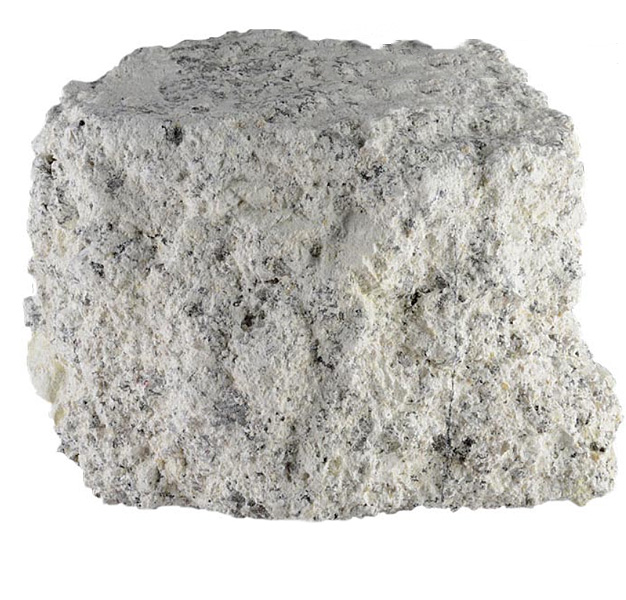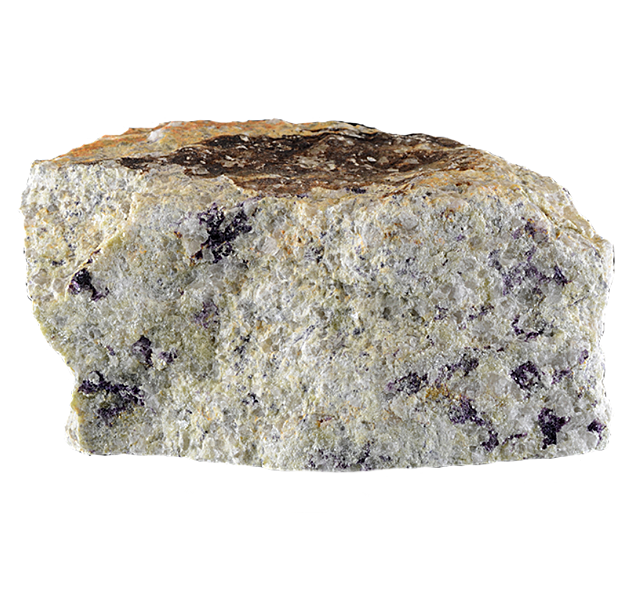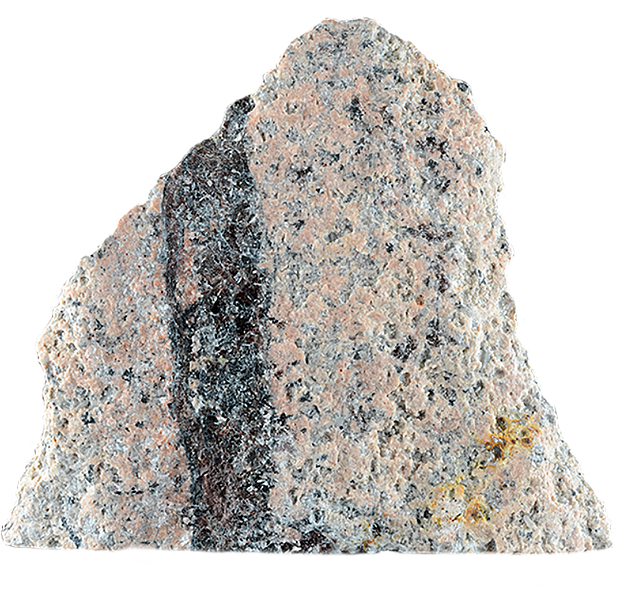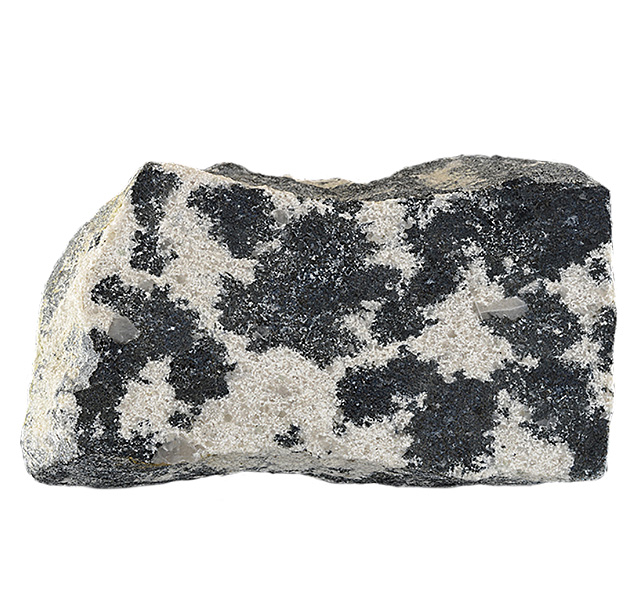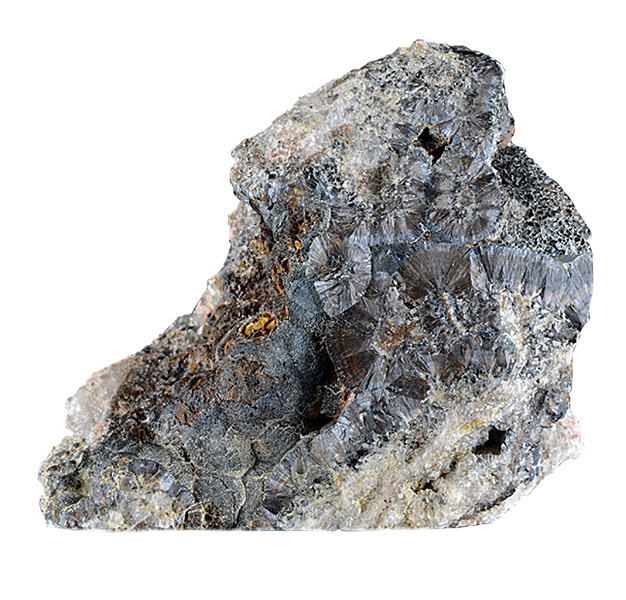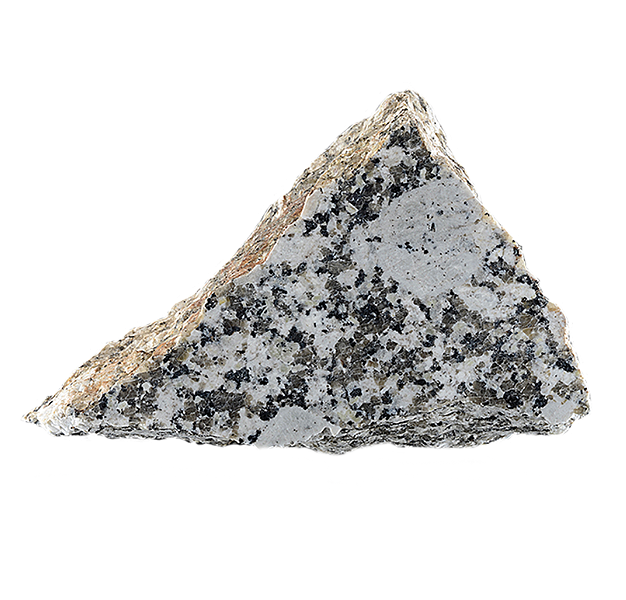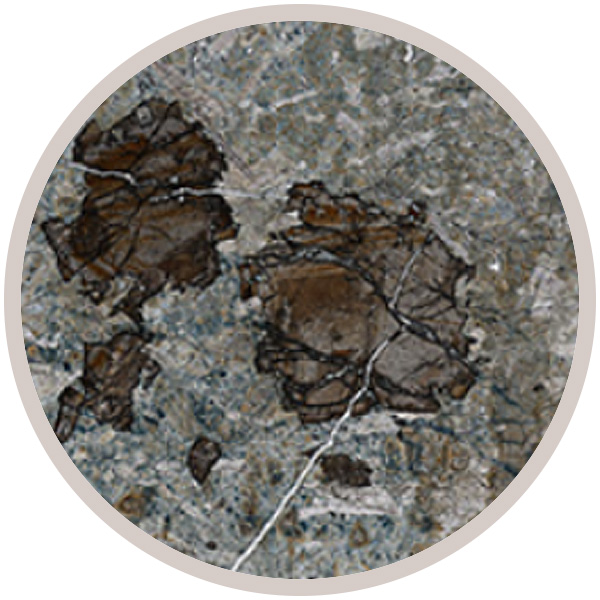
Fact sheet
Although the St Austell granite complex is famous for its china clay deposits it was at one time also the site of tin mines. This sample was collected from the Imperial lode in Goonbarrow china clay pit. Many thanks to Jeremy Hooper (Imerys Ltd) for providing the sample.
The colour of the tourmaline is why the old miners called this rock type "blue peach".
Note (in thin section) how the tourmaline and the cassiterite crystals are zoned - testimony to the rapidly changing conditions in a magmatic-hydrothermal environment.
A case study of the St Austell granite complex in Cornwall, England, illustrating the range of rocks associated with a granite intrusion. The earliest part of the complex is a siderophyllite (biotite) granite containing muscovite and tourmaline typical of a SW England granite, with many primary magmatic features.
This early intrusion was followed by the intrusion of an evolved volatile-rich magma which was the driving force behind a series of intense hydrothermal processes as volatiles escaped from this magma and helped to establish an extensive alteration halo (aureole). Boron, fluorine and lithium (as well as water) played major roles in the formation of the second intrusion and in the associated hydrothermal processes. Igneous activity lasted around 18 million years from 282 Ma (siderophyllite granite) to 265 Ma (fluorite granite).

